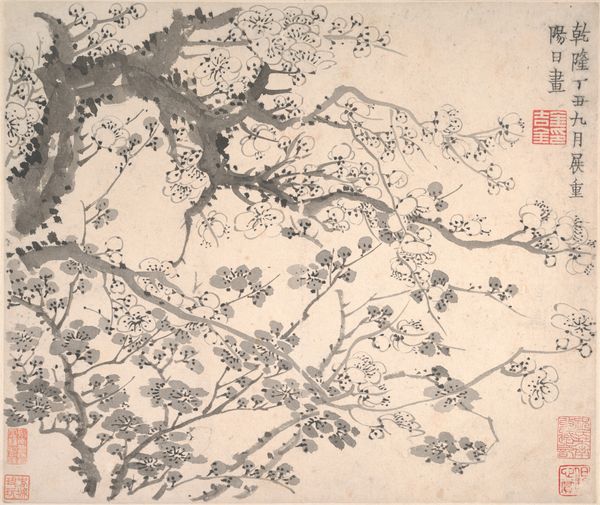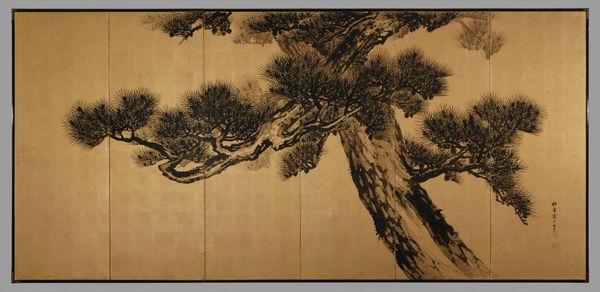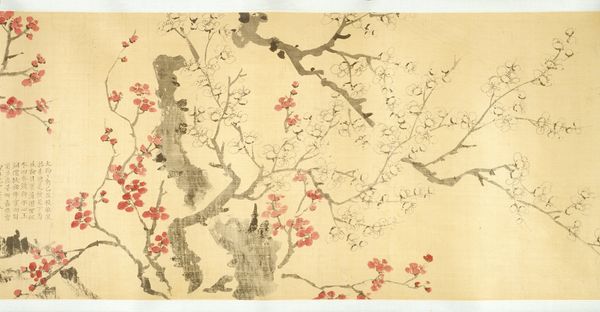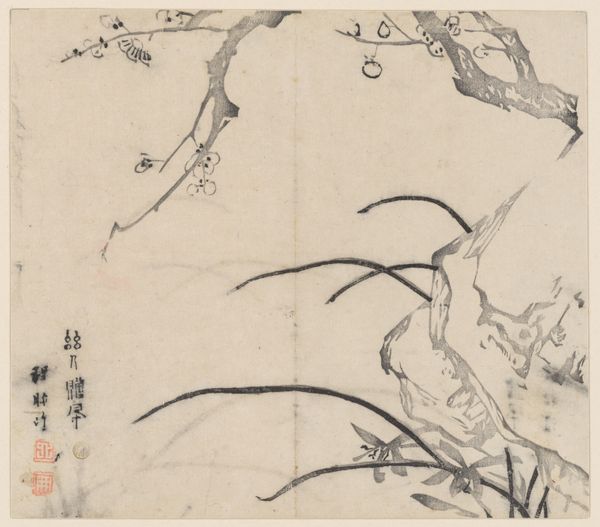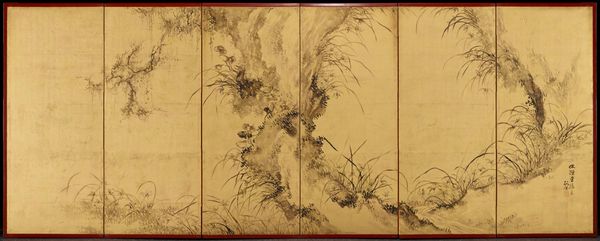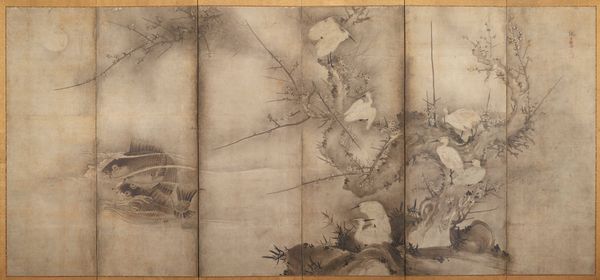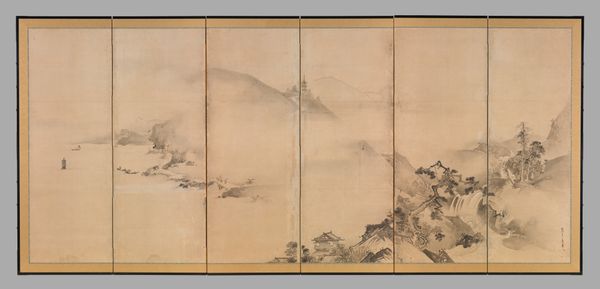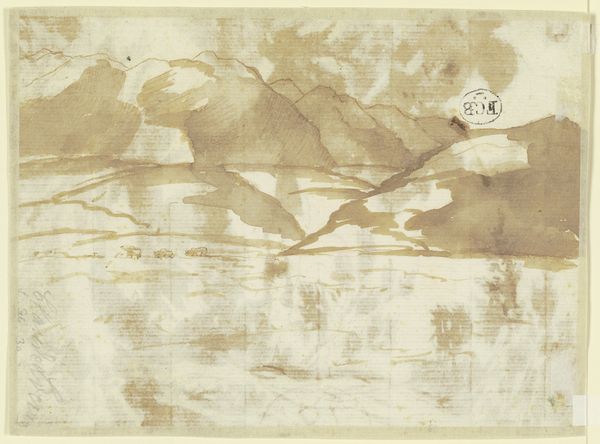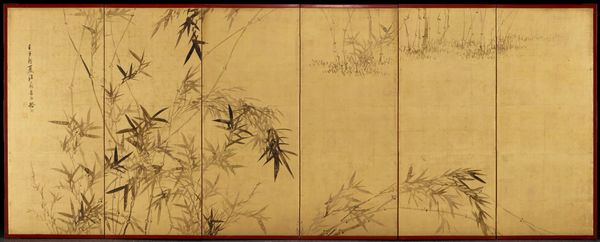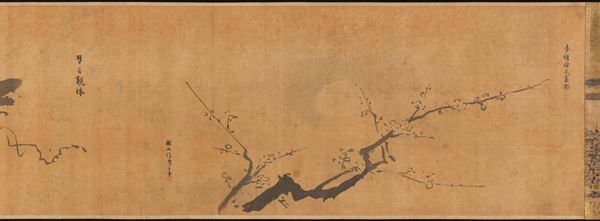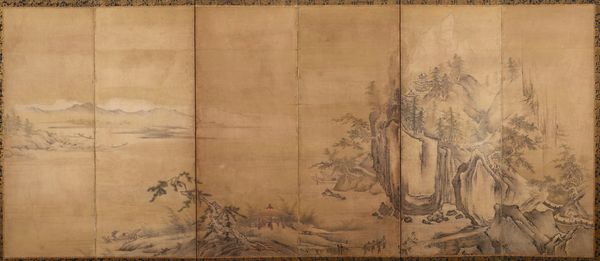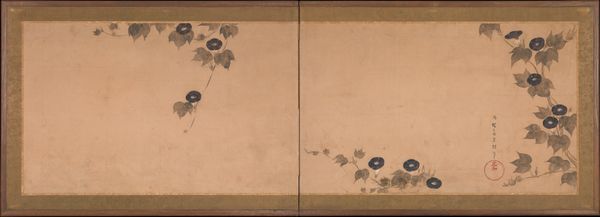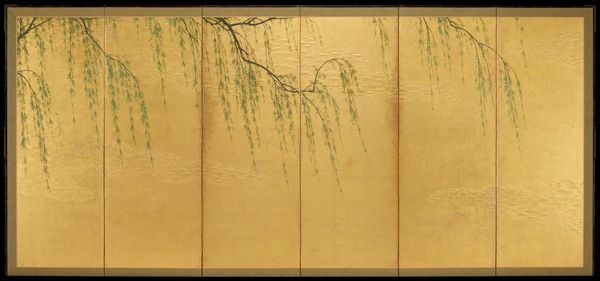
drawing, paper, ink-on-paper, ink
#
drawing
#
organic
#
ink painting
#
asian-art
#
landscape
#
paper
#
ink-on-paper
#
ink
#
line
Dimensions: 31 3/4 × 119 1/2 in. (80.65 × 303.53 cm) (image)67 1/2 × 129 1/2 × 5/8 in. (171.45 × 328.93 × 1.59 cm) (outer frame)
Copyright: Public Domain
This long horizontal painting of grapevines, with no known date, is rendered in ink on paper by an anonymous artist. The composition immediately strikes one with its rhythmic linearity and contrast between the dark ink and the warm, tan background. The structural arrangement of the vines, leaves, and grapes across the panels isn’t simply representational; it’s a carefully orchestrated visual dance. The curves and arabesques of the vines create a sense of movement, guiding the viewer's eye from one panel to the next. Note how the artist uses varying densities of ink to suggest depth and texture, bringing a tactile quality to the leaves and grapes. Consider the influence of calligraphy, where each stroke carries meaning and intent beyond mere representation. The emphasis on line and form, rather than strict realism, invites us to contemplate the underlying structures of nature and art. It's a play of signs, where the grapevine becomes a symbol, open to interpretation through the lens of our own experiences and cultural codes. Ultimately, the formal elegance serves as a reminder that art transcends mere imitation.
Comments
minneapolisinstituteofart almost 2 years ago
⋮
An enormous tangle of grapevines emerges at center left and trails up and away across the eight panels of this folding screen. The vines, depicted only in monochrome ink, are loaded with globular fruits and adorned with myriad spiraling tendrils. Although grapes lack the rich symbolic associations of the so-called Four Gentlemen (plum, orchid, chrysanthemum, and bamboo), paintings of grapevines are nevertheless common in all East Asian cultures, beginning with artists active in China during the Southern Song dynasty (1127–1279). Grapes and grapevines became a favored pictorial subject among Korean scholar-painters after the 1500s and remained popular throughout the Joseon dynasty.
Join the conversation
Join millions of artists and users on Artera today and experience the ultimate creative platform.
